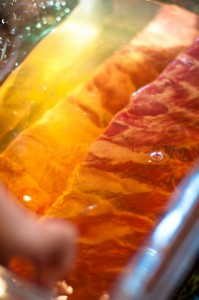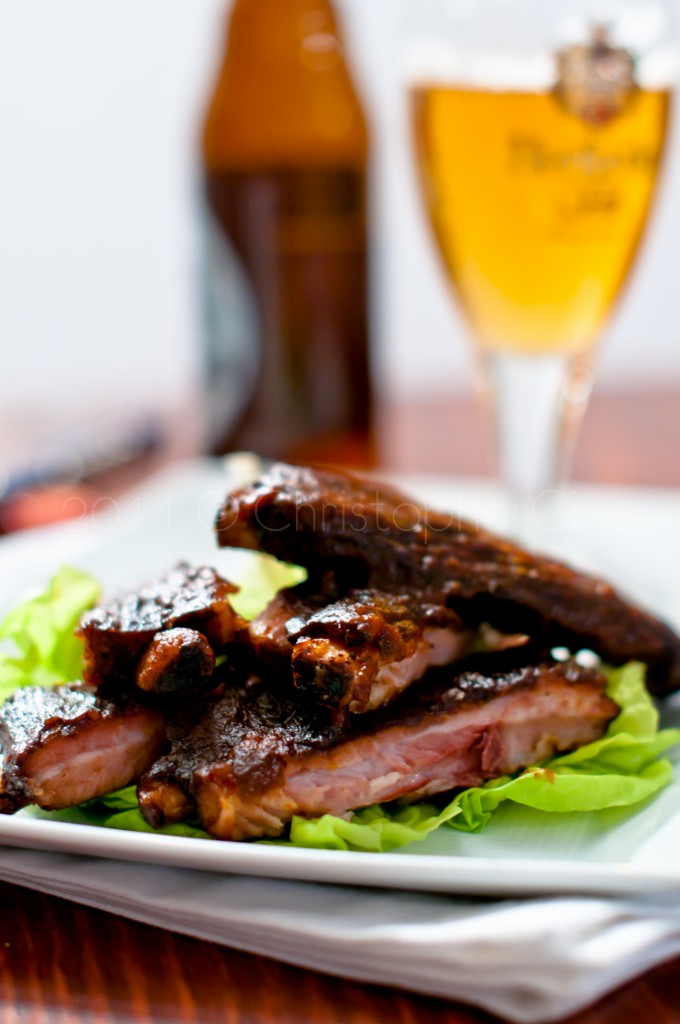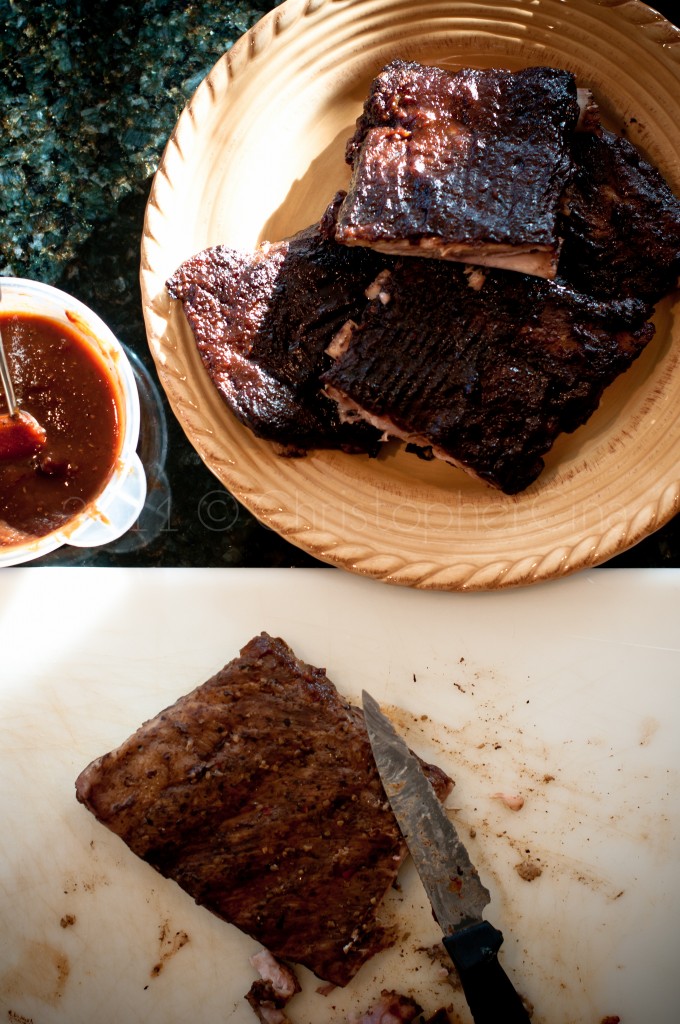From the moment I took the job opening up this steakhouse, I knew I was going to purchase an immersion circulator. While I never took any interest in molecular gastronomy, sous vide cooking was something that I valued as a cooking method. Sous Vide applications use actual foodstuffs, not that the ingredients in molecular gastronomy are not natural, but you don’t see them sitting on the shelf of your local grocer.
Sous vide, meaning “under vacuum” is a method of cooking by which items are cooked in vacuum packed bags for long periods of time in water baths at extremely low and precise temperatures.
The main argument against using sous vide methods is that it takes the skill out of cooking. The fact that you can hold a piece of meat at a perfect 138 degree medium rare for a few hours feels, to some, like cheating, much like boil in a bag cooking would. But as Thomas Keller points out, to truly get the most out of sous vide cooking, you need to understand the other methods that you will need to finish your item, i.e. searing, grilling, caramelizing and so on.
In the research I had done, I had read about the benefits of cooking vegetables, sub-prime meats and seafood. There are several blogs and a few cookbooks on the subject, the most well know being Under Pressure by Thomas Keller. Many of the sites mentioned ribs at various lengths of time, 24 hours and 48 hours, but it seemed 72 hours was the general consensus for fall off the bone, meltingly tender ribs.
This recipe, for the most part, will be difficult to produce for the majority of home cooks. The equipment that is required isn’t cheap, although there are less expensive, do-it-yourself options.
To start, we used two slabs of St. Louis ribs that had been squared off, larger ribs, more meat, and convenient eating size. After a quick rinse we brined the ribs for 24 hours. This is the same brine I use for all my pork and poultry…
 3 qt. water, room temp
3 qt. water, room temp
1 bottle white wine
1 lb brown sugar
1 cup kosher salt
Combine all the ingredients and mix until the salt has dissolved. Place the ribs in the brine and cover, refrigerate for 24 hours. Remove the ribs from the brine and rinse in cold water; pat dry.
Determine if the ribs need to be cut depending upon the size or your vacuum bags. Rub with your favorite dry rub and seal tightly. Make sure the ribs are not touching in the bag, this way you will have better heat contact over the whole slab. Place in the refrigerator.
Set your water bath and heat to 144.5° F (144° to 149° is a good range). Once you have reached the proper temperature, place the ribs in the water and leave for 72 hours. Over the course of the 72 hours, you will need to add water to your bath to keep the fill at the desired level as evaporation cannot be avoided.
After 3 days, remove the ribs from the bags, brush with BBQ sauce and finish on the grill or in the oven.
During our experiment, I wish I would have used a little more rub, I went very light and the ribs did not pick up much of that flavor, though the wine and brown sugar from the brine were evident.
The texture of the ribs was amazing, as was the fact that there was virtually no shrinkage in the meat. The bones pulled out clean and if I had wanted, I could have removed each bone individually and served a boneless slab of ribs. The only thing missing was that char you get from cooking the ribs in more conventional methods, thus the need to finish in the oven or grill. A little smoke flavor would have been good too. I think next time, in between the brining and the cooking, I will smoke the ribs for an hour before sealing in the cryovac.
I think this would be difficult to pull off at the restaurant on a consistent basis unless I had several circulators going constantly. I do have an Alto-Sham low heat slow cooker I am going to do the ribs in and I think it would be fun to do a side by side.


What brand of kosher salt do you use in your brine? The density of Morton’s greatly varies from that of Diamond Crystal.
Hey Andy,
I never got around to doing that side by side, but I will say I do enjoy the ribs that come out of my alto sham much better. More caramelization, better texture and they cook a hell of alot quicker than the immersion circulator.
Did you ever do your side by side comparison? I’ve actually done lots of sous vide cooking right in the Alto-Shaam as well, by placing the vacuum bagged items right on the shelves. I only use the bag if I’m trying to introduce extra flavors into the product through the vacuuming process, otherwise, I just roast or braise the item at low temperature.
I agree with Eunice. Three days might be too long for me to wait.
Glad I found you through the Front Range Food Bloggers Meetup. Hope to meet you soon!
Well- I say it is not fair to have the immersion circulator but not allow the mortals (customers) to sample the goods. When you decide to run a limited special one night with these- tell me. I’ll be there when the doors open.
So impressed. Also, drooling. Like a lot.
I have some food blogging friends who use sous vide a lot. Jury is still out for me…it’s seems it would be MOST beneficial in an environment like a restaurant where producing precision finishes for a lot of people is required. I cook for at most 10…and so far have stuck with the ‘old fashioned way.’ My grill!
I do brine though so thanks for yours; simple always works for me.
I don’t know that I could ever wait three days to eat ribs. Once I get a hankerin’ I must have them. Although these do look delicious.